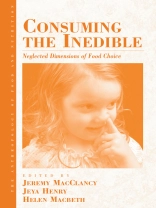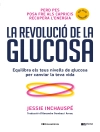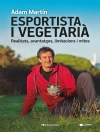Everyday, millions of people eat earth, clay, nasal mucus, and similar substances. Yet food practices like these are strikingly understudied in a sustained, interdisciplinary manner. This book aims to correct this neglect. Contributors, utilizing anthropological, nutritional, biochemical, psychological and health-related perspectives, examine in a rigorously comparative manner the consumption of foods conventionally regarded as inedible by most Westerners. This book is both timely and significant because nutritionists and health care professionals are seldom aware of anthropological information on these food practices, and vice versa. Ranging across diversity of disciplines Consuming the Inedible surveys scientific and local views about the consequences – biological, mineral, social or spiritual – of these food practices, and probes to what extent we can generalize about them.
Inhoudsopgave
List of Figures
List of Tables
Preface
List of Contributors
Introduction: Considering the Inedible, Consuming the Ineffable
Jeremy Mac Clancy, Helen Macbeth and Jeya Henry
Chapter 1. Evidence for the Consumption of the Inedible: Who, What, When, Where and Why?
Sera L.Young
Chapter 2. Consuming the Inedible: Pica Behaviour
Carmen Strungaru
Chapter 3. The Concepts of Food and Non-food: Perspectives from Spain
Isabel González Turmo
Chapter 4. Food Definitions and Boundaries: Eating Constraints and Human Identities
Ellen Messer
Chapter 5. A Vile Habit? The Potential Biological Consequences of Geophagia, with Special Attention to Iron
Sera L. Young
Chapter 6. The Discovery of Human Zinc Deficiency: A Reflective Journey Back in Time
Ananda S. Prasad
Chapter 7. Geophagia and Human Nutrition
Peter Hooda and Jeya Henry
Chapter 8. Consumption of Materials with Low Nutritional Value and Bioactive Properties: Non-human Primates vs Humans
Sabrina Krief
Chapter 9. Lime as the Key Element: A ‘Non-food’ in Food for Subsistence
Ricardo Ávila, Martín Tena and Peter Hubbard
Chapter 10. Salt as a ‘Non-food’: To What Extent Do Gustatory Perceptions Determine Non-food vs Food Choices?
Claude Marcel Hladik
Chapter 11. Non-food Food During Famine: The Athens Famine Survivor Project
Antonia-Leda Matalas and Louis E. Grivetti
Chapter 12. Eating Garbage: Socially Marginal Food Provisioning Practices
Rachel Black
Chapter 13. Eating Cat in the North of Spain in the Early Twentieth Century
F. Xavier Medina
Chapter 14. Insects: Forgotten and Rediscovered as Food. Entomophagy among the Eipo, Highlands of West New Guinea, and in Other Traditional Societies
Wulf Schiefenhövel and Paul Blum
Chapter 15. Eating Snot: Socially Unacceptable but Common. Why?
María Jesús Portalatín
Chapter 16. Cannibalism: No Myth, but Why So Rare?
Helen Macbeth, Wulf Schiefenhövel and Paul Collinson
Chapter 17. From Edible to Inedible: Social Construction, Family Socialisation and Upbringing
Luis Cantarero
Chapter 18. The Use of Waste Products in the Fermentation of Alcoholic Beverages
Rodolfo Fernández and Daria Deraga
Afterword: Earthy Realism: Geophagia in Literature and Art
Jeremy Mac Clancy
Index
Over de auteur
Helen Macbeth is Chair of ICAF (UK) and Honorary Research Fellow at the Anthropology Department, Oxford Brookes University.












